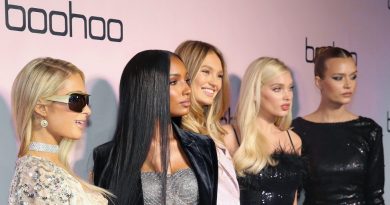How beauty brands ramped up their DTC sites in 2020 – Glossy
As the pandemic hit and stores lost foot traffic, beauty customers flocked to DTC sites and caused unanticipated sales spikes. As a result, brands have been rushing to increase the pace of their site developments to maintain customer loyalty. New features that have been accelerated this year include shoppable video content, product-finding tools, subscription services and other interactive experiences to replace store visits.
“Right now, your DTC site is more valuable to you than it’s ever been before,” said Vic Drabicky, founder of digital consultancy January Digital. “The thing that’s going to be challenging to see is whether or not any brand adapted fast enough to build a strong customer base, and then [can] retain that customer base.”
From shoppable videos to livestreaming, brands have developed their site video content this year with a focus on shoppability. Wander Beauty, for example, added a shoppable capability to videos in its site’s video library in August 2020. The brand was inspired to conduct the video revamp by a statistic released by YouTube showing that 70% of millennials have watched a tutorial video in the past year.
“When a lot of our retail partners started closing their doors because of the pandemic, it became much more important for us to provide that service to customers on our own DTC website,” said Ezra Chasser, senior director of e-commerce and marketing at Wander Beauty.
While the brand’s retail partners include Sephora, Dermstore, SkinStore, Net-A-Porter and Cult Beauty, “the DTC channel itself became much more of a focal point than it has been in the past,” said Chasser, who noted that pre-pandemic sales were “spread more evenly throughout other channels.” According to him, the new shoppable feature has increased conversion rates.
“Users are becoming more video-centric,” he said. “This is the very beginning of what’s going to become the mainstream in the next few years.”
On-site shoppable video content has also taken off in the form of livestreaming, with brands in both the Estée Lauder Companies and L’Oréal Group portfolios introducing on-site shoppable live streaming during the pandemic.
Instagram Live has also added shoppable capabilities, but on-site video content has certain benefits, said Jeff Rosenblum, co-founder of digital agency Questus. “Social media channels don’t share the data. By putting it onto your DTC website, you know who’s interacted with the content, how much content they’ve watched, which content they’ve watched, and thus you can then serve them on subsequent content and advertisements. The problem is you have a much smaller audience.”
With fewer consumers going into stores to receive recommendations and help from store associates, quiz-based online product finder tools have become even more popular for brands. Supergoop launched its online product finder in October, guiding users through a quiz to help them select from the brand’s 40-plus sunscreen products.
The pandemic has upended the way people shop, as they browse to learn about new products online and reserve physical store trips for essentials. “The discovery is happening online,” while shopping in a physical store is now for “convenience,” said Supergoop president Amanda Baldwin. She noted that the brand’s DTC sales growth has been “through the roof” in 2020, surpassing its total sales forecast for the year in September.
The Inkey List, meanwhile, introduced an online gift-finder quiz tool in December. The tool allows users to answer a series of questions about the recipient, in order to build a custom gift box. The giftee receives the box, along with a voucher for use on its new 1:1 consultation feature. This launch follows the brand’s move from being exclusively wholesale to launching DTC e-commerce after the pandemic hit.
“One of the biggest benefits about selling DTC is you own the data of the customer,” said Jay Meyers, the co-founder and vp of growth for Bold Commerce, a tech company that sets up e-commerce for brands including Pharrell’s new skin-care brand Humanrace. With retail partners, “you don’t even know who’s buying your skin care. You don’t know how they buy, when they buy — you don’t know any of their buying habits.”
Large brands have introduced a wide range of virtual alternatives to the in-store experience. VR shopping is also catching on with brands including Charlotte Tilbury and Maison Christian Dior this year. For the holiday season, Jo Malone became the latest beauty brand to adopt the feature. The luxury perfumer created a “virtual townhouse” in which users could enter multiple virtual “rooms” with 360-degree navigation set to music. They could then click through featured products to purchase them through the brand’s site.
Drabicky said that the fundamentals should come before the “next big flashy shiny object,” when it comes to fine-tuning the e-commerce experience.
“The boring is usually best,” he said, noting that brands should ensure ease of the shopping experience, good communication with customers and data collection, before jumping into the most high-tech new features. “Eighty percent of what’s going to work is executing fundamentals really well,” he said. “That last 20% is you taking a chance on something new.”







